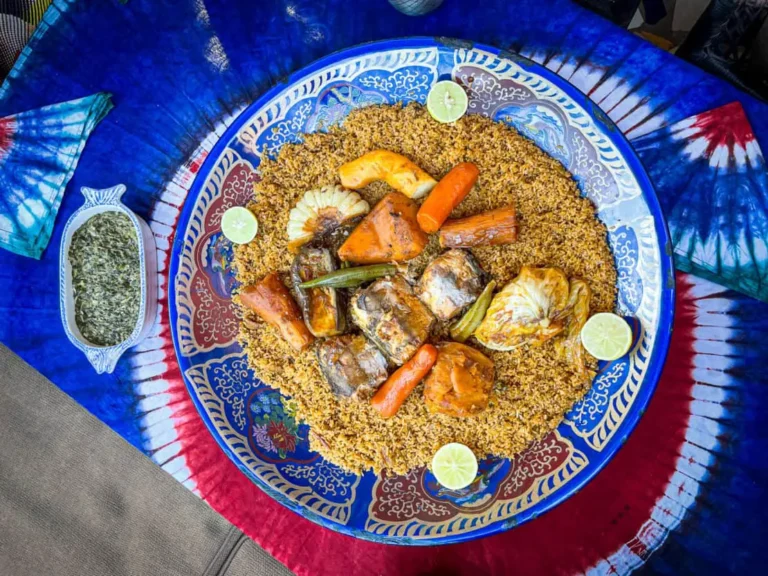Introduction: Understanding Gambian Cuisine
Gambia is a small West African country that is known for its rich culture. Its cuisine is a reflection of the diverse cultures and history of the country. The food is typically made with fresh ingredients, such as fish, vegetables, and rice. Gambian cuisine has been influenced by various cultures over the years, including African, European, and Middle Eastern.
Historical Influences: Tracing the Roots
Gambian cuisine has deep roots in African culture. The traditional foods of Gambia have been influenced by the various ethnic groups that have lived in the country for centuries. The Mandinka and Wolof people are two of the largest ethnic groups in Gambia, and their foods have had a significant impact on the country’s cuisine. Traditional Gambian foods include benachin (jollof rice), domoda (peanut stew), and yassa (grilled chicken or fish with onions and lemon).
Colonial Era: Impact on Gambian Food Culture
The arrival of the Europeans in Gambia in the 15th century had a significant impact on the country’s food culture. The Portuguese were the first Europeans to arrive, followed by the British in the 17th and 18th centuries. The British had the greatest impact on Gambian cuisine, introducing new foods such as bread, tea, and potatoes. They also brought livestock, such as cows and sheep, which had an impact on the meat dishes in Gambian cuisine.
Post-Independence: Modernization and Globalization
After gaining independence in 1965, Gambia’s food culture began to modernize. The country’s government began to invest in agriculture, which led to an increase in food production. This led to the introduction of new foods, such as tomatoes, onions, and peppers. The rise of global trade and travel also had an impact on Gambian cuisine, as more international foods became available in the country.
Regional Influences: West African and Islamic Flavors
Gambian cuisine is heavily influenced by the flavors and ingredients of other West African countries, such as Senegal and Guinea. The Islamic influence on Gambian cuisine is also significant, as most Gambians are Muslim. This has led to the introduction of new spices and flavors, such as cumin, coriander, and turmeric.
Contemporary Trends: Fusion and Innovation in Gambian Cooking
In recent years, there has been a trend towards fusion cuisine in Gambia. This has led to the creation of new dishes that combine traditional Gambian ingredients with international flavors. For example, some Gambian restaurants now serve dishes such as chicken curry and pasta dishes. There has also been a trend towards innovation in Gambian cooking, with chefs experimenting with new ingredients and cooking techniques. This has led to the creation of new and exciting dishes that are unique to Gambian cuisine.

